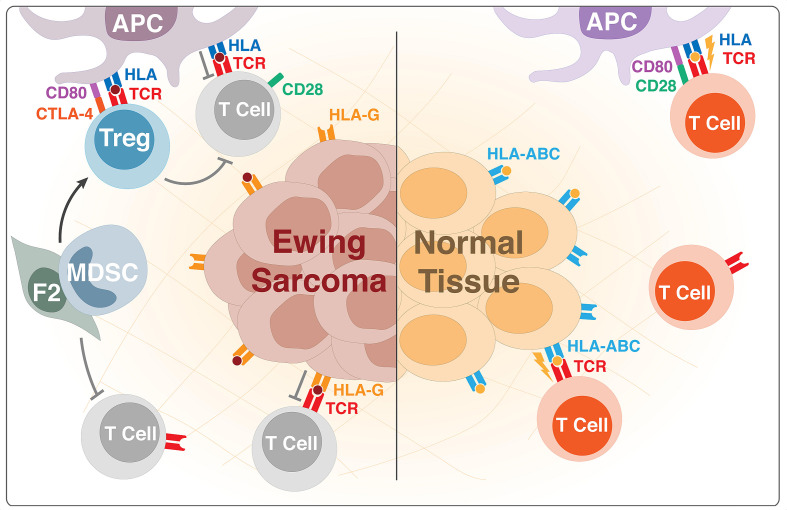Figure 1.
Immunosuppression in the Ewing sarcoma tumor microenvironment. Low expression of human leukocyte antigen (HLA)-A, B, C on Ewing sarcoma cells prevents recognition of tumor-associated antigens by antigen presenting cells and effector T cells, while high expression of HLA-G actively suppresses tumor-specific T cells. Tregs also function to dampen the antitumoral T cell response, namely through production of suppressive cytokines and binding of CD80 on antigen presenting cells (APCs). The binding of CD80 on APCs by Treg CTLA-4 prevents CD80-CD28 costimulation of T cells, resulting in T cell anergy. The presence and activity of intratumural Tregs is further augmented by cytokines produced by F2 fibrocytes and myeloid-derived suppressor cells (MDSCs). Similarly to Tregs, F2 fibrocytes and other MDSCs also produce cytokines that dampen the cytotoxic T cell response. HLA, human leukocyte antigen; TCR, T cell receptor; Tregs, regulatory T cells.

